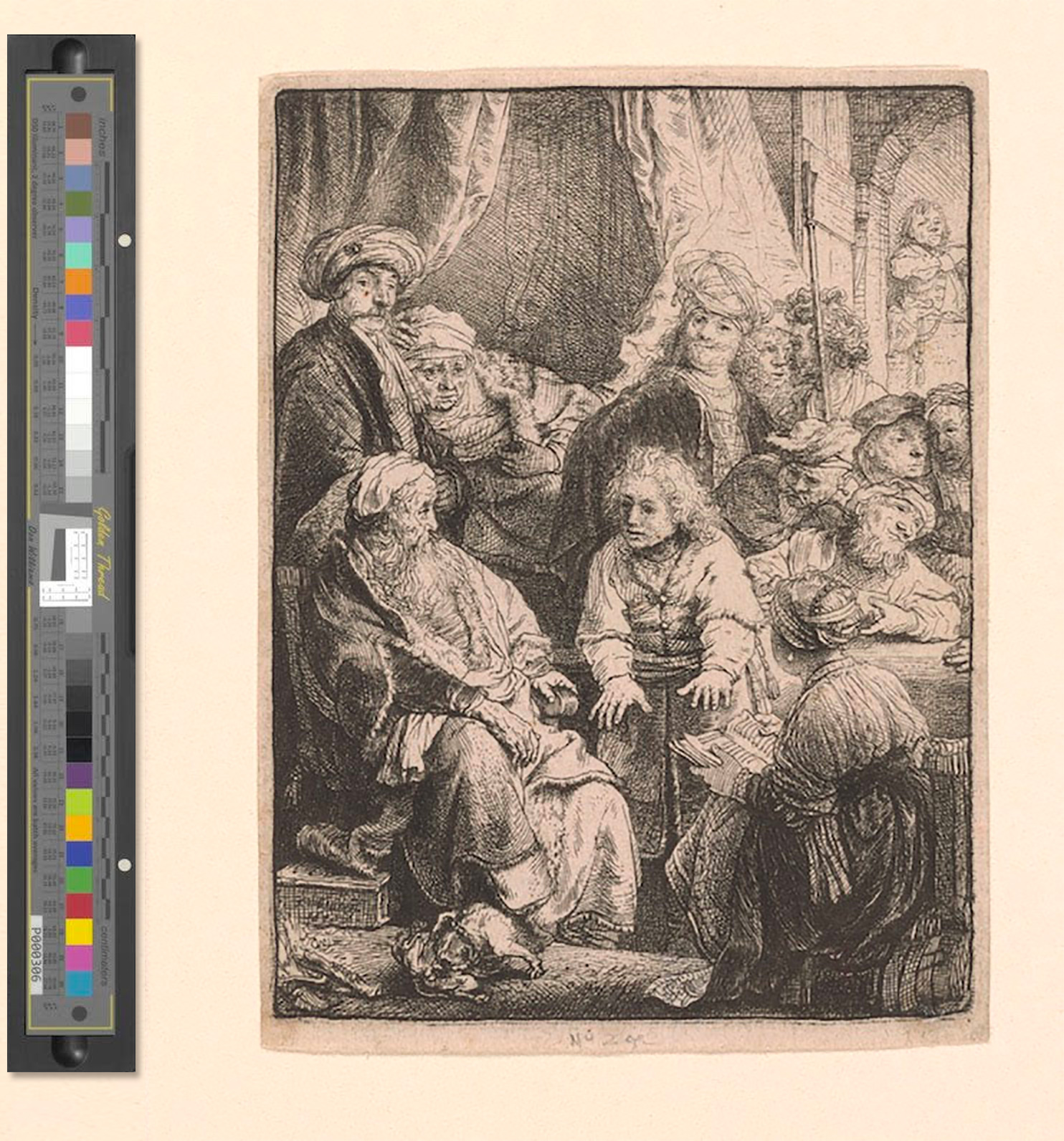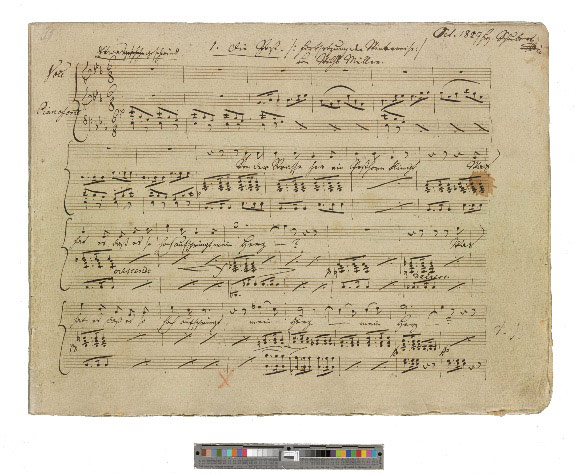Solutions for
Flat Artwork
Image courtesy of The Morgan Library & Museum, New York. Mary Flagler Cary Music Collection.
DT Heritage
Conservation Handling
Priceless flat artwork requires careful handling to ensure the process of digitization does not degrade their condition. This is especially important for drawings made with delicate media, paintings already in degraded condition, and items of priceless value. Each of our systems provides a range of handling options to put the operator in control of the material, ensuring their safety.
Copy Stand vs Easels
Laying fine art such as a painting on a copy stand provides a rapid and simple way to ensure planarity to the camera, even focus, and controlled repeatable lighting. The DT Versa (with hard top in place) and DT Element provide an excellent matte black working surface for a variety of flat artwork sized 30” x 40” or less.
There are circumstances where it is beneficial to capture flat artwork vertically. For these situations there are wall mounted and free standing easels and related devices that can hold artwork in place during digitization. These options include art easels vacuum boards, magnetic boards, and systems that use positionable clamps or clips to hold the artwork in place. When using such devices our cameras such as a Phase One iXH, Phase One iXG, or Phase One XF camera body can be removed from the copy stand and place on a tripod, or sold without a copy stand at all.

The Morgan Library & Museum. RvR 53. Photography by Graham S. Haber
Ready to preserve history?
We can help.
Why Digitization?
Do it once. Do it right.
With the technology, expertise and services offered by DT Heritage, it is possible to create a very high-quality digital mirror of your original assets, creating an immediately accessible digital archive.
DT Heritage
Preservation Quality
DT solutions exceed FADGI 4-Star, ISO 19264, and Metamorfoze-Strict standards. At the heart of all of our systems are our purpose-built cameras offering up to 150mp of resolution at 16-bits of color depth. Coupled with cultural-heritage LED illumination (high CRI, high CQS, and smooth spectral shape), high-resolution lenses, and ultra-low vibration shutters this results in true Preservation Digital Objects with accurate color, tone, and detail. Many manufacturers claim their equipment attains FADGI 4-star or ISO ISO 19264-1 A-class quality but very few others do. Our raw processing software, with its class-leading debayering algorithm, extracts pixel-level detail and color accuracy previously only seen in cumbersome multi-shot systems.
Color is often especially important when it comes to fine art reproduction. Capture One Cultural Heritage Edition comes with a set of diligently measured, created, and validated ICC color profiles for each DT camera-lighting configuration. We also support the use of third party profiles created by software such as BasICColor or Profile Maker. In addition, Capture One CH 10 provides a tool called Color Editor that allows customization of the color profile within Capture One so that the resulting edits can be batch applied, thereby saving time on post-production as no more fine-tuning each image in Photoshop is required. Resolution is also very important to the accurate reproduction of fine art. On the DT Versa, DT Element, and DT Atom XY stitching can provide any resolution for any size material. For oversized artwork this is invaluable for creating immersive Preservation Digital Objects or high quality reproductions. For instance, an easy four-position stitch provides a 50” x 70” file at 240ppi. Leveraging the raw processing in Capture One Cultural Heritage Edition software, and its class-leading debayering algorithm DTDCH solutions extract pixel level detail and color accuracy previously only seen in cumbersome multi-shot systems.
DT Heritage
Production Speed
In some flat art reproduction applications the speed of capture is not critical. For example, when digitizing large paintings on canvases the time to handle the artwork will greatly exceed the capture time. In other types of flat art reproduction such as a large collection of sketches on paper production speed is critical – both during capture and post-processing. DTDCH solutions are able to deliver unsurpassed speed in both categories.
Capture Stage
Our systems capture in a fraction of a second and display almost immediately. Therefore the capture rate is limited only by the condition of the material and how quickly it can be handled. When capturing a large collection of sketches on paper, for instance, it is reasonable to expect capture rates of over 1000 items per hour.
Using the Multi Crop tool in Capture One CH can increase productivity even further. A project to digitize a large collection of hand drawn postcards in good physical condition could capture multiple cards per frame, increasing capture rates to over 3000 items per hour.
Post-Processing Stage
DTDCH offers two excellent post processing suites.
Capture One CH is a modern solution built on the venerable and widely used Capture One software. It is designed for cultural heritage workflows, supports all modern operating systems, is frequently updated, and can handle massive numbers of files with ease. Checking focus, zooming in on high resolution images, and scrolling through pages for quality control is lightning fast. Capture One CH is ideal for art reproduction and features tools such as Autocrop and AutoDeskew, Multi Crop, LAB Support, Resolution Ruler, Batch Processing, as well as Raw-Stage Quality Control. These tools enable the automation of tedious post-production tasks that are inherent to the post-processing stage of art reproduction. The included Cultural Heritage ICC color profiles also greatly cut down post-processing time by providing excellent color accuracy without the need for time consuming and error prone in-situ profiling. The included Color Editor provides rapid fine tuning of color as needed at the raw stage.

The Morgan Library & Museum. Photography by Graham S. Haber
DT Heritage
Extensive Flexibility
The encyclopedic collections of cultural heritage institutions are rarely homogenous. Our systems are versatile, interoperable, and modularly upgradeable to ensure you’re not stuck with a limited tool box. They are also flexible in their use, allowing techniques that are impossible on competing systems.
Interoperable and Modularly Upgradable
Our solutions for digitizing flat art comprise either an all-in-one format or a modular format. Our modular systems include a reprographic system (such as the DT Element, or DT Versa or DT Atom), a capture head (such as the DT RCam), and lighting. Each of these components can be purchased and upgraded separately. For instance, an institution that purchased a [DT Element & DT RCam] for flat art reproduction would only need to add the DT Film Scanning Kit to scan an encyclopedic transmissive collection. Likewise, an institution that purchases a [DT Versa & DT Rcam] for book scanning already has everything they need to begin scanning flat art.
Creative Lighting
Most of the time Cultural Heritage imaging is done with very flat proscriptive lighting, typically two lights mounted 45° from the subject. However, there are situations where more creative lighting is required, for instance, to rake light across an embossed cover to enhance the dimensionality of the embossing. DTDCH systems can provide this creative lighting. With the DT Versa and DT Element the lights are always on light stands and can be easily raised or lowered without limitations. With the DT Atom the DT Photon lights can be removed from the fixed arms and placed on stands in any position.

The Morgan Library & Museum, New York. Mary Flagler Cary Music Collection.
Industry-leading
Imaging Technology
We can digitize anything at a level of detail you can’t get anywhere else. You have to see it to believe it. Check out our product videos to see the equipment in action.
DT Titan
Meet the DT Titan, the largest modern copy stand. Digitizing large material presents a unique challenge to most typical copy stands. From historical maps and oversized artworks to textiles and elephant folios, finding a surface to support the subject, as well as getting the entire piece in the image sensor’s field of view, can be a struggle. With those specific needs in mind, DT has created our largest digitization system – the DT Titan
DT Versa
Meet the DT Versa, our solution designed for the digitization of all kinds of collections. The stand, camera, and column seamlessly integrate with our software for fast and easy preservation-grade digitization. The Versa allows digitization with or without glass contact. With the Versa hardtop in place, all scanning is done 100% contact-free. Removing that hardtop reveals a conservation-friendly glass top with a user-settable maximum and with such precise control of the object that the operator can raise the object to lightly kiss the glass.
DT Element
Meet the DT Element, it’s more than a copy stand – a complete digitization platform. The stand, camera, and column tightly integrate with our software for fast and easy preservation-grade digitization. Our DT Element complies with FADGI 4-star, Metamorfoze Strict, ISO 19264 image quality, and JHOVE file format standards.

